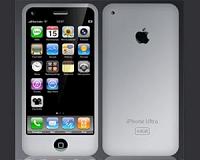 |
New Delhi (AFP) Sept 15, 2010 During this year's IPL cricket tournament in India, mobile phone manufacturers used the hugely popular extravaganza to blitz viewers with an array of sponsorship deals and advertising. But rather than seeing the familiar big international brands, cricket fans were bombarded by nimble home-grown handset makers who saw the opportunity to reach consumers nationwide, particularly in rural areas. One of them, Karbonn, was the official partner mobile phone, sponsoring the "moment of the match". Another, Maxx Mobiles, sponsored the "strategic time-out". A third, Micromax, spent heavily on advertising during games. During the IPL, or Indian Premier League, local manufacturers outscored their bigger foreign rivals such as Nokia, Samsung and Motorola in the battle to win new customers in one of the world's fastest growing mobile markets. "The established global manufacturers are losing ground in India," Anshul Gupta, principal analyst at global consultancy Gartner, told AFP. "The local guys are coming into the market great guns. They've got very affordable handsets with locally tailored offerings like marathon battery life to help with power problems that make them appealing," Gupta said. Domestic brands have already snatched a 14-percent share by revenue of the 270-billion-rupee (5.8-billion-dollar) handset market, up from four percent a year earlier, telecom journal Voice and Data said in a survey. Finnish giant Nokia is still market leader, but its share is down 12 percentage points to 52 percent, according to Voice and Data, whose annual survey is the most comprehensive of India's telecom equipment industry. New Delhi-based Micromax, the leader among Indian brands, with phones starting at 40 dollars, has a 4.1-percent share by revenue and is selling more than a million handsets a month through its 40,000 outlets. "We have grown very fast in a very short period," said Micromax managing director Rajesh Agrawal, who set up the company just two years ago with three friends. The firm's debut phone offered 30 days of standby battery life -- a breakthrough in a country where around 400 million people still have no electricity. Other phones offer powerful built-in flashlights or simple icons to help illiterate clients. Another enticing feature is phones that hold two -- sometimes even three -- SIM cards, allowing clients to pick and choose among the cheapest providers in India's hyper-competitive mobile market. The trick is "tailoring the handsets to meet Indian requirements, especially of those outside the big cities", said Deepesh Gupta, managing director of Zen Mobile, another leading handset maker. Zen, Micromax and others currently source their devices at low cost from China. India, known more for its software-led services, is emerging as a manufacturing base but its technical capabilities are still dwarfed by China's. The tie-up with Chinese firms means the Indian groups are able to offer their devices at prices that undercut the established foreign brands by 30 percent or more for equivalent devices, analysts say. India is a market for low-cost innovators, with cellphones selling for an average of 52 dollars. Eight-five percent of devices on offer cost less than 100 dollars, according to Gartner. Some manufacturers have already started moving upmarket, offering basic smartphones with QWERTY keyboards, chat services, FM radios, cameras and Wifi Internet capability. Voice and Data says there are BlackBerry lookalikes on the market for around 5,000 rupees (100 dollars), less than half the cost of a real BlackBerry, whose Canadian manufacturer is embroiled in a security spat with India's government. One in 10 of the world's mobiles is sold in India, Gartner says, and the country adds 15-17 million new mobile subscribers every month. Per capita ownership in a country of 1.2 billion people is also extremely low at 57 phones per 100 people, offering decades of growth ahead. That should be good news for established goliaths such as Finland's Nokia, Japanese-Swedish alliance Sony Ericsson, US-based Motorola and South Korea's Samsung and LG, which are all eyeing the Indian market. Mary McDowell, Nokia executive vice president, acknowledged the firm could have been quicker off the mark in attacking India's low-end segment, calling it a "hot market in which you have to be at the top of your game to deliver". "We do often lead, but we can't be first in everything," she conceded in New Delhi recently at the unveiling of a new 2,000-rupee Nokia phone featuring the company's first dual SIM cards for the Indian market. Beleaguered Nokia, which installed a new chief executive this week, faces a particular squeeze from low-end rivals and Apple's iPhone at the top end. Where Indian brands may fall short is in durability, with the quality of the finished article lower than equivalent products from established manufacturers. "But with the short life-cycles of handsets today, many buyers are willing to experiment," noted Voice and Data chief editor Prasanto Roy.
Share This Article With Planet Earth
Related Links Space Technology News - Applications and Research
 One-fourth of US adults use mobile applications: survey
One-fourth of US adults use mobile applications: surveyWashington (AFP) Sept 14, 2010 US cellphone owners are much more likely to use the devices to take pictures or send text messages than they are to run applications, according to a report released on Tuesday. Thirty-five percent of US adults have applications on their mobile phones but only 24 percent actually use the programs, according to the report from the Pew Research Center's Internet & American Life Project. Ele ... read more |
|
| The content herein, unless otherwise known to be public domain, are Copyright 1995-2010 - SpaceDaily. AFP and UPI Wire Stories are copyright Agence France-Presse and United Press International. ESA Portal Reports are copyright European Space Agency. All NASA sourced material is public domain. Additional copyrights may apply in whole or part to other bona fide parties. Advertising does not imply endorsement,agreement or approval of any opinions, statements or information provided by SpaceDaily on any Web page published or hosted by SpaceDaily. Privacy Statement |